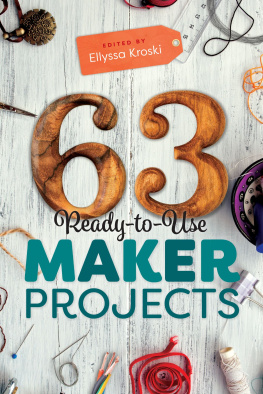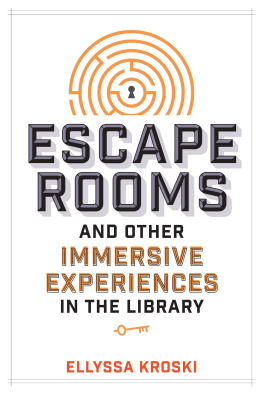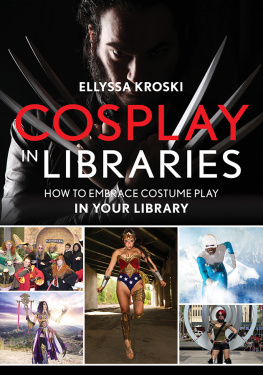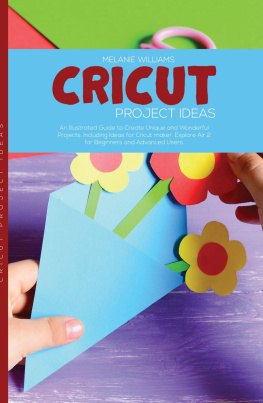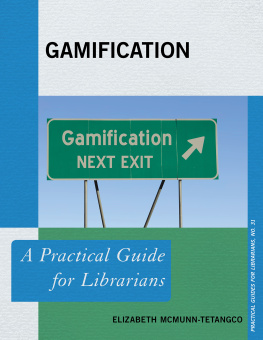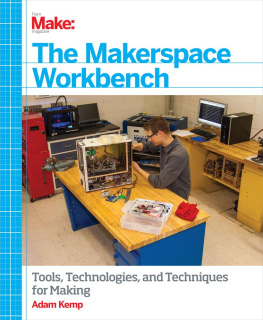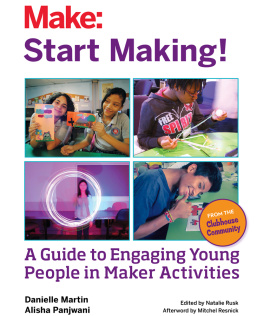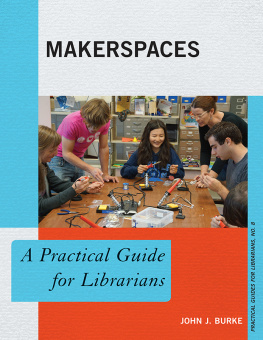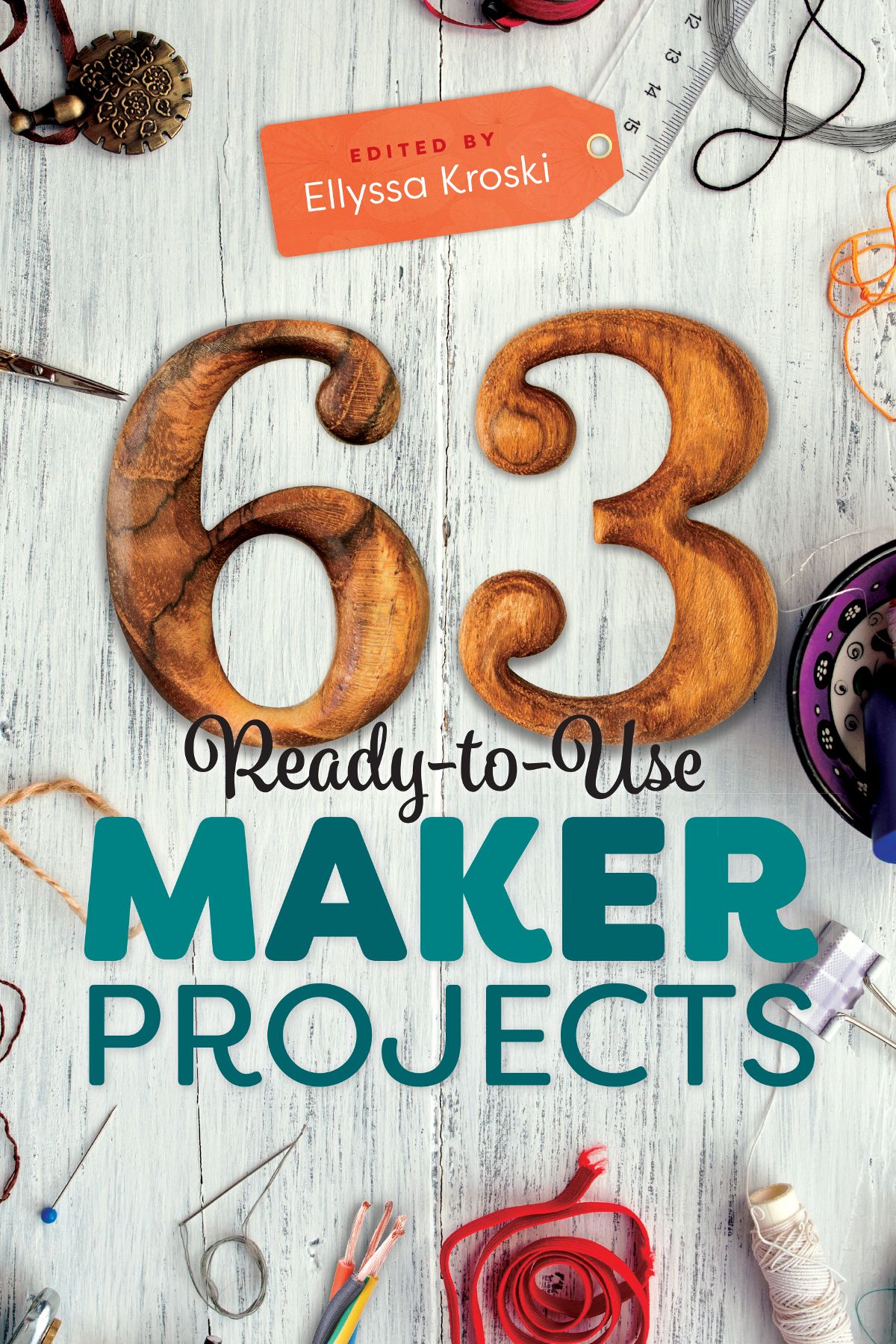
ALA Editions purchases fund advocacy, awareness, and accreditation programs for library professionals worldwide.
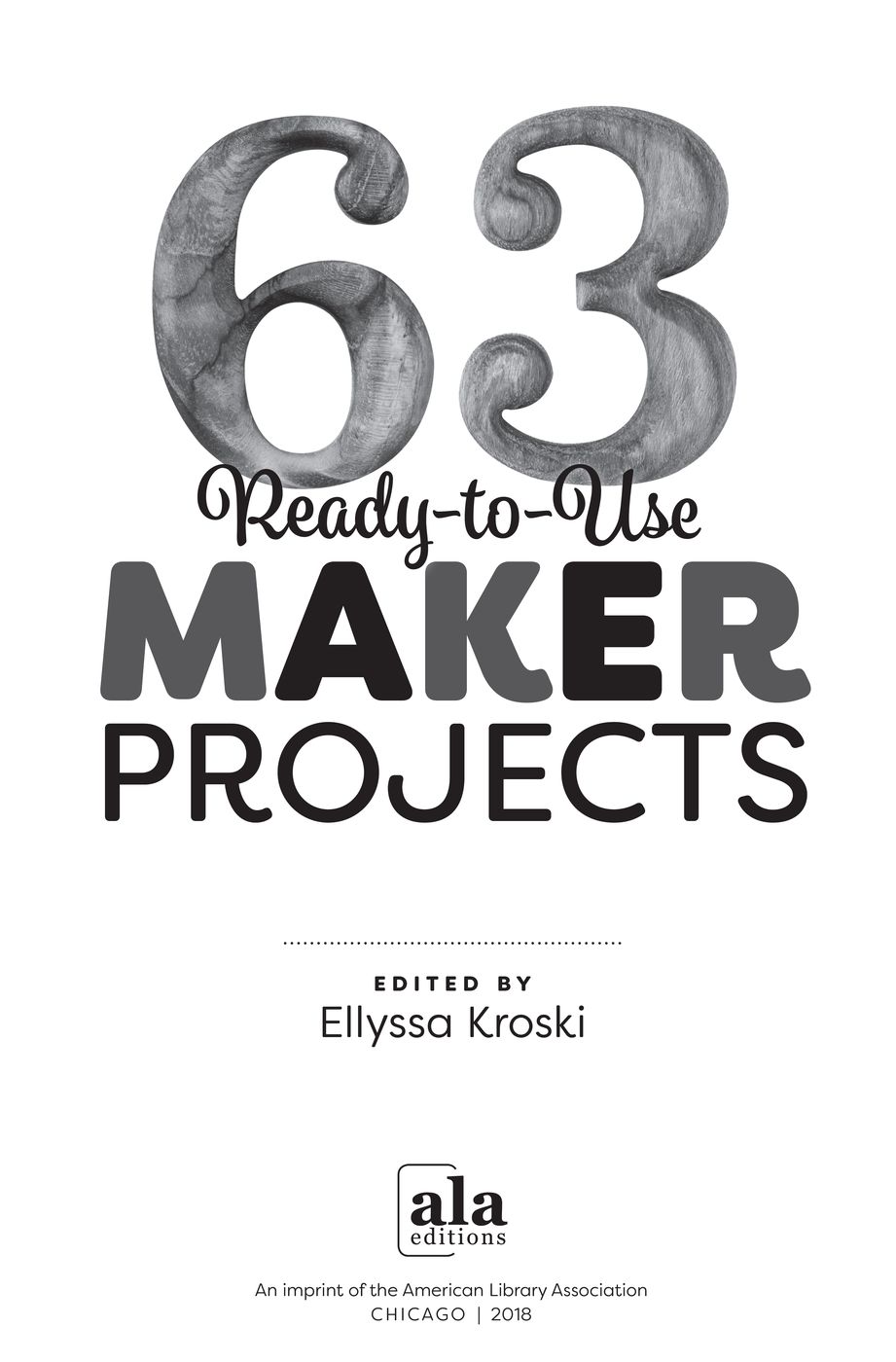
Ellyssa Kroski is the director of information technology at the New York Law Institute as well as an award-winning editor and author of thirty-six books, including Law Librarianship in the Digital Age, for which she won the American Association of Law Libraries Joseph L. Andrews Legal Literature Award in 2014. Her ten-book technology series, The Tech Set, won the ALAs Best Book in Library Literature Award in 2011. She is a librarian, an adjunct faculty member at Drexel University and San Jose State University, and an international conference speaker. Her professional portfolio is located at www.ellyssakroski.com.
2018 by the American Library Association
Extensive effort has gone into ensuring the reliability of the information in this book; however, the publisher makes no warranty, express or implied, with respect to the material contained herein.
ISBNs
978-0-8389-1591-2 (paper)
978-0-8389-1661-2 (PDF)
978-0-8389-1662-9 (ePub)
978-0-8389-1663-6 (Kindle)
Library of Congress Cataloging-in-Publication Data
Names: Kroski, Ellyssa, editor.
Title: 63 ready-to-use maker projects / edited by Ellyssa Kroski.
Other titles: Sixty-three ready-to-use maker projects
Description: Chicago : ALA Editions, an imprint of the American Library Association, 2018.
Identifiers: LCCN 2017024393| ISBN 978-0-8389-1591-2 (pbk. : alk. paper) | ISBN 978-0-8389-1662-9 (epub) | ISBN 978-0-8389-1661-2 (pdf) | ISBN 978-0-8389-1663-6 (kindle)
Subjects: LCSH: Makerspaces in libraries. | LibrariesActivity programs.
Classification: LCC Z716.37 .A15 2018 | DDC 025.5dc23
LC record available at https://lccn.loc.gov/2017024393
Contents
BY JESSICA LOGAN
BY SPRING LAVALLEE
BY HEATHER BUHLER
BY MELISSA SALNAVE
BY SILVIA GUTIERREZ
BY JESSICA LOGAN
BY CATHERINE BLAIR
BY CATHERINE BLAIR
BY LYSSA TROEMEL
BY NICK MADSEN
BY HEIDI COLOM
BY AMANDA KRAMER
BY LYSSA TROEMEL
BY LEANNE POSEY
BY SILVIA GUTIERREZ
BY JESSICA LOGAN
BY SPRING LAVALLEE
BY LYSSA TROEMEL
BY KATHERINE LAWRENCE
BY SILVIA GUTIERREZ
BY HANNAH POPE
BY SUSAN BARNUM
BY SUSAN BARNUM
BY JESSICA LOGAN
BY CASEY MCCOY
BY CORY GREENWOOD
BY LAURA BAKER
BY ERIK CARLSON
BY LAURA BAKER
BY ERIK CARLSON
BY LYSSA TROEMEL
BY JACQUELINE R. MITCHELL
BY ERIK CARLSON
BY JACQUELINE R. MITCHELL
BY AMANDA KRAMER AND BRIAN PALMER
BY BRIAN PALMER
BY LIZZIE NOLAN
BY LAURA BAKER
BY JESSICA LOGAN
BY MICHAEL CHERRY
BY MICHAEL CHERRY
BY TOM TRAN
BY KATE LOMAX
BY JOE STEWART, JAMES BETTKE, ANNIE STEWART, AND SHANE MANN
BY KATE LOMAX
BY NICK MADSEN
BY EMILY STRATFORD
BY ANDY HORBAL AND LEALIN QUEEN
BY ANDY HORBAL AND LEALIN QUEEN
BY SIENNA CITTADINO
BY SIENNA CITTADINO
BY AMELIA VANDER HEIDE
BY INGRID GRACE
BY SIENNA CITTADINO
BY ANDY HORBAL, PRESTON TOBERY, AND YITZHAK PAUL
BY JESSICA LOGAN
BY HANNAH POPE
BY LYSSA TROEMEL
BY MICHAEL CHERRY
BY SUSAN BARNUM
BY SUSAN BARNUM
BY SAMANTHA TRINH
BY JUAN DENZER
I WOULD LIKE to thank all of the talented, creative authors who generously dedicated their time and expertise to contribute to this unique work.
LIBRARY MAKERSPACES ARE informal, creative spaces where patrons can learn, invent, build, and make in partnership with the library and fellow makers. They offer fantastic opportunities for libraries to provide valuable tools, machines, resources, and STEM (science, technology, engineering, and math) skills to their community through instruction or simply by providing access to their spaces and equipment. As more and more libraries design makerspaces of their own, the need to plan engaging programming around them increases. This is a one-stop guidebook on how to do just that!
63 Ready-to-Use Maker Projects is an all-in-one recipe book for makerspace programming that is chock-full of practical project ideas for libraries, each authored by librarians and makers. The projects range in cost, topic, and difficulty as well as space and equipment requirements, so there is something for every size and type of library, even those without makerspaces.
Projects run the gamut from sewing and crafts projects such as do-it-yourself chain mail, creating cardboard standups, and hydro-dipping flower pots to high-tech and robotics programs such as building solar robots and creating an ultrasonic speed detector. Also included are digital media projects such as video editing to remix films and light painting, as well as a plethora of milling, soldering, and cutting projects, programs involving 3D printing, and circuitry, wiring, and wearables projects. Each project includes step-by-step instructions, a materials and equipment list, learning outcomes, and recommendations for next projects.
Public, school, and academic librarians, including those in libraries without a dedicated makerspace, who are looking to learn and create programming around makerspace topics will benefit from this resource.
Ellyssa Kroski
Director of Information Technology
The New York Law Institute
Create Your Own Lava Lamps
JESSICA LOGAN / BRANCH MANAGER
Hamilton Mill Branch, Gwinnett County Public Library
Type of Library Best Suited for: School or Public
Cost Estimate: Under $50
Makerspace Necessary? No
PROJECT DESCRIPTION
Create your own lava lamp using basic household items like recycled plastic bottles, vegetable oil, food coloring, and fizzy tablets. Have a blast from the past with these colorful, take-home projects that are sure to result in a hit maker program.
This program is a one-hour stand-alone event that can easily be held at any time during the year. The Gwinnett County Public Library hosts this event with a target audience of teens and tweens in grades 612, but this project is also suitable for a younger age group. Even before adding the fizzy tablets, children enjoy watching their creations bubble and swirl inside the plastic bottles.
OVERVIEW
Aimed at teens and tweens in grades 612, the participants work to create lava lamps using basic household items, including plastic bottles (20-ounce beverage bottles work especially well), vegetable oil, food coloring, and fizzy tablets. Because many of the participants become excited at the prospect of creating their own lava lamp, be sure to provide step-by-step written instructions for the activity prior to beginning so that they can be used as a reference. Before and throughout the activity, explain not only what steps to take, but also the science behind each one.
We do not limit this program to a specific number of participants, but we do make sure to have enough materials on hand so that everyone can take home a lava lamp. Start collecting bottles early so that you have enough. You can always use smaller bottles if you have a limited budget to purchase the other materials, or end up needing to stretch your vegetable oil a little more than planned.
Next page
